GardenerHeaven.com is reader-supported. When you buy through links on our site, we may earn an affiliate commission.
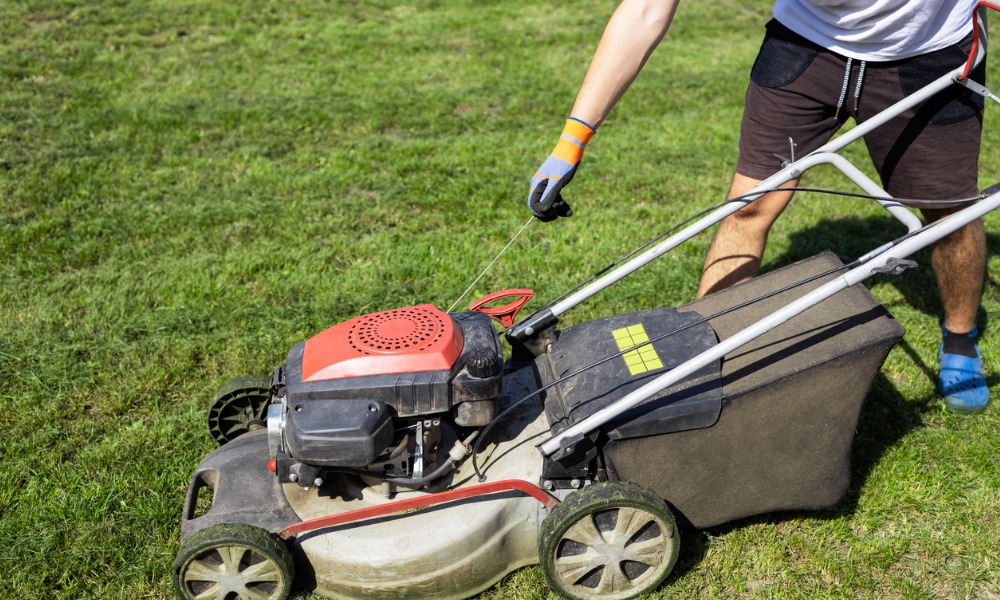
A functioning lawn mower is essential for maintaining a well-kept yard. In this section, we’ll explore the importance of having a mower that starts smoothly after sitting idle. We’ll also provide an overview of the common reasons behind this issue, offering easy solutions to get your lawn mower up and running quickly. So let’s dive in and troubleshoot those starting problems together!
Importance of a functioning lawn mower
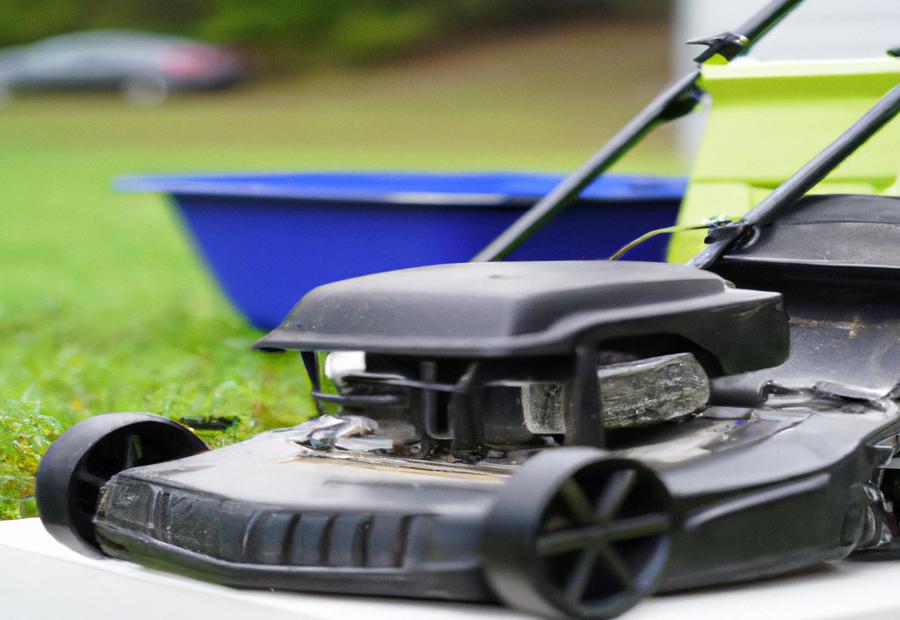
Photo Credits: Gardenerheaven.Com by Edward Rivera
The importance of a reliable lawn mower cannot be overstated. It is key to a neat lawn. Without a working mower, cutting grass is hard and slow. A functional lawn mower is a must to get even cuts and the desired height.
A functioning lawn mower simplifies cutting the grass and helps keep the lawn healthy and attractive. It ensures the blades are sharp and can cut through the grass without causing damage or uneven cuts. It hinders weed growth by cutting the grass cleanly and blocking weed seeds from growing.
Maintaining and caring for a lawn mower is also essential for its long life and performance. Neglecting duties like cleaning filters, checking spark plugs, and solving issues right away may lead to problems such as clogged filters, dirty carburetors, and worn-out spark plugs, which will affect the mower’s ability to run and start. Therefore, taking care of any issues quickly and maintaining a regular maintenance schedule to keep the lawn mower in top shape is essential.
To sum up, having a working lawn mower is essential for convenience and preserving the health and looks of your lawn. Regular upkeep, like replacing or cleaning filters, examining spark plugs, and dealing with any issues immediately, will guarantee that your mower starts perfectly after being idle for some time. With proper lawn mower care, you can enjoy a well-kept lawn with minimum effort.
Overview of common reasons for a lawn mower not starting after sitting
A lawn mower not starting can be a massive hassle for homeowners. Common issues causing this include:
- a dirty air filter
- old or contaminated gas
- a clogged fuel filter
- worn spark plugs
- carburetor issues
To solve these problems, consider the following:
- cleaning or replacing the air filter
- draining and refilling the gas tank
- replacing the fuel filter
- replacing the spark plugs
- cleaning the carburetor
- checking and repairing the flywheel key
- clearing any blockages in the mower deck
Be sure to take safety precautions when performing maintenance on the mower. This includes:
- wearing protective gear
- following the manufacturer’s instructions
- disconnecting the spark plug wire
- using a socket wrench if needed
- checking the safety release mechanism cable
Regular maintenance and preventative measures are vital in keeping a lawn mower in optimal working condition. Homeowners can ensure their mower runs smoothly by understanding the common reasons for starting problems and taking the necessary steps.
Common Reasons for a Lawn Mower Not Starting After Sitting
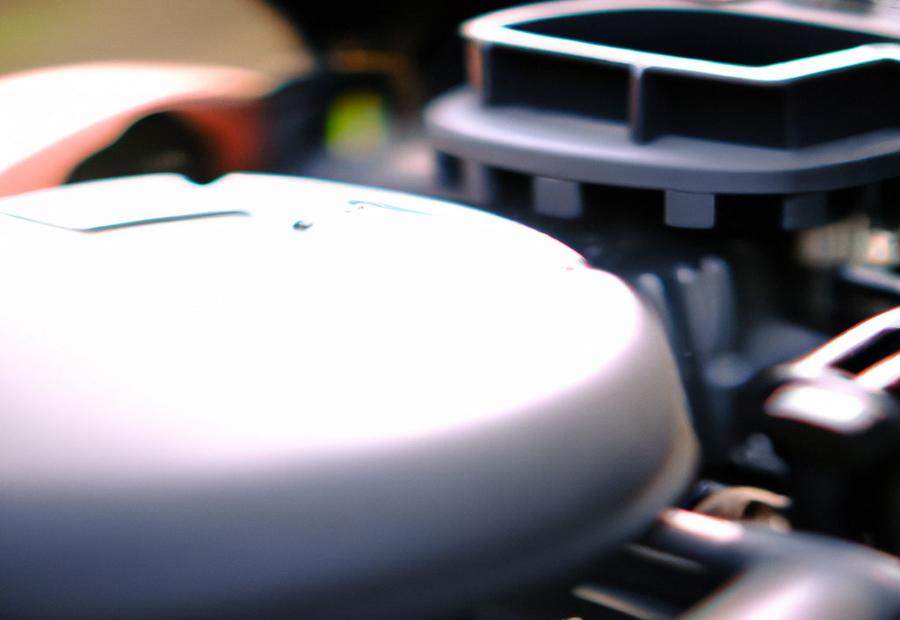
Photo Credits: Gardenerheaven.Com by Nicholas Roberts
Discover the most common reasons your lawn mower refuses to start after sitting idle. We’ll explore the culprits behind this frustrating issue, from a dirty air filter to worn spark plugs. Stay tuned for easy solutions to these problems to get your lawn mower up and running smoothly again.
Dirty air filter
A dirty air filter can cause a lawn mower to not start after sitting for some time. This filter is important for keeping dust, dirt, and debris from entering the engine and causing damage. Clogged air filters slow down the flow of air to the engine, preventing proper combustion and starting.
Maintaining the air filter is key for the performance and longevity of a lawn mower. If neglected, it can lead to reduced engine power, increased fuel consumption, and even engine damage. To clean a dirty air filter, take it out and inspect it for dirt and debris. If it’s dirty or clogged, use compressed air or tap it against a hard surface to remove loose particles. If damaged, replace it with a new one.
Checking and cleaning the air filter regularly will help your lawn mower start quickly after sitting idle. Always follow the manufacturer’s instructions when handling and servicing the filter to avoid any damage. Taking preventative measures and performing regular maintenance, like cleaning the air filter, will prolong the life of your lawn mower.
Old or contaminated gas
A lawn mower not starting after sitting? Old or contaminated gas could be to blame! Gas can break down over time, making it harder for the engine to start. Contaminated fuel, like fuel exposed to water or debris, can also cause problems.
Drain and refill the gas tank with fresh fuel to fix this issue. This will give the engine the clean, powerful gasoline that it needs.
In addition, check the fuel filter and spark plugs. Clogs or contaminants in the filter can restrict fuel flow, and spark plugs may become worn or fouled. These components are essential for the ignition process.
Fresh gasoline is best for preventing future issues. Keeping the gas tank full and using a fuel stabilizer during inactivity will help maintain the gas quality.
Overall, addressing old or contaminated gas is key. Drain and refill the gas tank, check and replace components related to the fuel system, and take preventative measures. That way, your lawn mower will start up smoothly every time!
Clogged fuel filter
A clogged fuel filter can be a real pain for lawn mower owners. When debris or sediment blocks the filter, fuel stops reaching the engine, causing starting problems. To get your mower going again, here’s what to do:
- Find the fuel filter: Usually between the gas tank and carburetor. Check your manual for exact details.
- Disconnect the fuel lines: Use pliers or a wrench.
- Replace the filter: Take out the old one and add a new one of the same type and size.
- Re-attach the fuel lines: Connect them to the new filter.
Regular maintenance, like cleaning or replacing the filter, can help prevent clogs. Keeping your fuel flowing freely will improve your mower’s performance and lifespan.
Also, a clogged fuel filter can cause other symptoms, like stalling or sputtering during use. It’s best to fix this quickly to avoid further damage.
Worn spark plugs
A blocked-up air filter can restrict airflow to the engine, making it run poorly and potentially wear out spark plugs quickly. Using bad or contaminated gas can also cause deposits on the plugs, stopping them from sparking well. Another possible issue is a clogged fuel filter, which stops enough fuel from reaching the spark plugs, thus reducing performance and causing starting problems. A faulty carburetor can also hamper ignition efficiency since it may not give the right amount of fuel-air mix to the engine, making it hard for worn spark plugs to set off the fuel.
Furthermore, a damaged flywheel key can interfere with the ignition timing, leading to starting issues. It is important to remember that a blocked mower deck can stop the engine from getting good airflow, resulting in overheating and possible harm to the spark plugs.
Also, there may be certain elements particular to each situation that cause worn spark plugs to make starting difficult. Examining your lawn mower equipment often and promptly attending to maintenance needs is essential.
Using fuel without ethanol additives can help reduce deposits on the spark plugs, making them last longer. Cleaning and replacing worn-out spark plugs regularly as part of regular maintenance will also help the engine perform better.
Spark plug manufacturers usually suggest replacing them every 25-50 hours of operation or once a year, according to the source “Fixing a Lawn Mower That Won’t Start After Sitting – Easy Solutions Inside.”
Carburetor issues
A clogged jet or passage in the carburetor can stop fuel from flowing. This stops the engine from starting. A worn or stuck float valve can also mean no fuel enters the bowl, making it hard to start. Misadjusted carburetor settings can give too much/little fuel during startup. It’s essential to address these issues quickly. Regular maintenance and cleaning can help prevent them.
Faulty flywheel key
A faulty flywheel key can be the culprit if your lawn mower won’t start after inactivity. This component synchronizes ignition timing and keeps the engine running smoothly. A misalignment between the flywheel and crankshaft can occur due to a faulty key, preventing your lawn mower from starting.
To rectify this issue, take these steps:
- Disconnect the spark plug wire. This is essential for safety.
- Remove the engine cover to access the flywheel.
- Inspect and replace the flywheel key. Use pliers or a screwdriver to remove it if worn or damaged. Replace it with a new one that matches the original specs of your engine.
- Reassemble all parts securely and align them properly. Reconnect the spark plug wire and try to start your lawn mower.
Addressing a faulty flywheel key ensures your lawn mower starts quickly and runs smoothly after sitting idle. It is also essential to clean or replace air filters, drain and refill gas tanks, replace fuel filters or spark plugs, clean carburetors, and clear blockages in mower decks.
The next step in our guide will focus on safety measures and precautions when performing maintenance on a lawn mower.
Blocked mower deck
A blocked mower deck can cause your lawn mower not to work correctly. Grass clippings, leaves, and dirt can stop the blades from spinning. This can lead to an uneven cut or even make it stall.
To unblock it, here are the steps:
- Park the mower on a flat surface and put the brake on.
- Please take off the spark plug wire to stop it from starting.
- Unscrew the bolts on the cover or chute.
- Look closely at the underside of the mower deck for any build-up.
- Use a brush or scraper to remove blockages from the blades and the chute.
For difficult debris, use a hose or pressure washer to clean the mower deck thoroughly.
Remember to clean and maintain your mower deck regularly. After each use, clear the debris to keep it working well.
Doing this lets you keep your mower cutting evenly and make it last longer. Get your lawn mower running smoothly again with these solutions!
Solutions to Fix a Lawn Mower That Won’t Start After Sitting
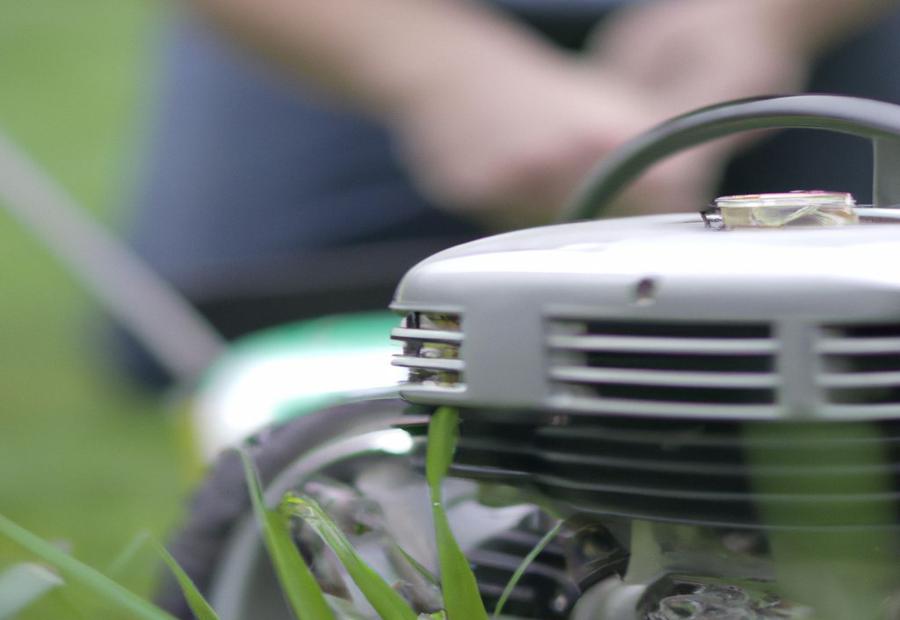
Photo Credits: Gardenerheaven.Com by Ethan Rivera
Having trouble starting your lawn mower after it has been sitting? Don’t worry; we’ve got you covered with some simple solutions! This section will explore various techniques to get your lawn mower up and running smoothly. From cleaning or replacing the air filter to checking and repairing the flywheel key, we’ll cover all the necessary steps to troubleshoot and fix the issue. No need to panic; we’ve got the solutions right here!
Cleaning or replacing the air filter
Time to clean or replace the air filter? Follow these four steps!
- Remove: Locate the filter housing. Unscrew/clip it off. Carefully lift off the housing.
- Clean: If your filter is foam or fabric, wash it with soap and water. Rinse and dry. For paper filters, tap or blow air.
- Inspect: Clean, and inspect the filter for tears, holes, and excessive wear. If you spot damage, replace it.
- Reinstall/Replace: Place back into the housing. Secure screws/clips if needed. Check the manual for compatible replacement instructions.
Remember: Regular air filter maintenance is key for optimal mower performance. Clean/replace it at least once a season or if you notice decreased engine performance/difficulty starting.
Say goodbye to lousy gas and hello to a clean-cut yard with a freshly fueled mower!
Draining and refilling the gas tank
- Step 1: Unplug the spark plug wire. Always unplug the spark plug wire for safety before doing maintenance on the lawn mower.
- Step 2: Spot the gas tank. See where the gas tank is on your lawn mower. It’s usually near the engine and can be reached easily.
- Step 3: Empty old gas. Draw out all old or contaminated fuel from the gas tank with a siphon pump or by tilting the mower over a container. No pieces of debris or impurities should be left behind.
- Step 4: Fill it up with new gas. Put fresh, high-quality gasoline into the gas tank. Don’t use stale or ethanol-blended fuels, as they can cause starting problems. Don’t fill it too full.
It’s worth noting that if other solutions don’t work, you might have to drain and refill the gas tank. Doing this will ensure proper combustion and efficient operation of your lawnmower.
Removing old fuel and replacing it with clean gasoline prevents gasoline degradation and the buildup of impurities in your lawn mower’s fuel system. This ensures smooth starts, extends engine life, and boosts overall performance. Checking and maintaining your gas tank often will keep your lawn mower running well even after long periods of not being used.
If your fuel filter is as clogged as your ex’s inbox, it’s time to change.
Replacing the fuel filter
- Spot the fuel filter. It’s usually between the tank and the carburetor. Check the manual or talk to a pro if you don’t know the exact spot.
- Disconnect the spark plug wire. Disconnect the spark plug wire before working on the fuel system to avoid sparking.
- Take out the old filter. Use pliers or a wrench to undo the fuel lines from both ends. Watch out – some fuel may still be in the lines.
- Put in the new filter. Fix it to the fuel lines, ensuring it’s pointing in the flow direction on the filter.
- Reconnect the fuel lines. Tighten up the lines with pliers or a wrench.
- Test for leaks and start the mower. After replacing the filter, check for leaks. Attach the spark plug wire and try to start the mower.
Replacing the fuel filter will help your mower start better after idle. Following these steps will ensure the fuel flows properly and your mower starts optimally.
Replacing the spark plugs
- Replace your lawn mower’s spark plugs with these four simple steps:
- First, disconnect the spark plug wire. Pull the rubber boot off the spark plug terminal.
- Second, use a socket wrench to take out the old spark plug.
- Third, check and adjust the gap of the new spark plug. Examine the manufacturer’s specifications to match the electrode gap.
- Lastly, install and tighten the new spark plug. Don’t overtighten it or strip the threads.
Inspect and replace worn-out spark plugs regularly. Otherwise, inefficient combustion decreased power output, and increased fuel consumption may occur. Proper maintenance is key for a reliable, efficient lawn mower. And don’t forget to clean the carburetor. Scrub away the gunk so it doesn’t choke.
Cleaning the carburetor
Cleaning the carburetor is essential for the lawn mower’s engine. It optimizes the fuel-to-air mixture, allowing the engine to run smoothly and efficiently. Without regular cleaning, it can lead to rough idling, poor acceleration, and even stalling.
To properly clean the carburetor:
- Disconnect the spark plug wire.
- Locate the carburetor near the air filter and fuel tank. Remove it and take it apart with a screwdriver or wrench.
- Use carburetor cleaner spray to clean each component. Use a brush or toothbrush for stubborn residue. Then, rinse it off with water.
Remember that different carburetors may need extra attention, so read the manufacturer’s instructions or seek professional help.
Regular maintenance is also essential. Solutions include cleaning or replacing the air filter, draining and refilling the gas tank, replacing fuel filters, replacing spark plugs, checking and repairing flywheel keys, and clearing any blockages in the mower deck. Doing these steps regularly ensures optimal performance and longevity.
Checking and repairing the flywheel key
The flywheel key is vital to a lawn mower’s engine. It lines up the flywheel and crankshaft, allowing for proper ignition and combustion. However, it can become damaged or sheared off over time, leading to starting issues. Examining and fixing the flywheel key is essential for the engine to function correctly.
Here is a guide on how to check and repair the flywheel key:
- First, remove the spark plug wire to avoid accidental starting of the lawn mower.
- Unscrew the bolts or screws that secure the starter cover and remove it.
- Find the flywheel, usually on the engine near the starter rope.
- Check the flywheel key for any damage or shearing. If it’s bent, broken, or misaligned, replace it.
- Use pliers or a small wrench to grip and pull out the damaged key from its slot.
- Install a new flywheel key by aligning it with the groove on the crankshaft and pressing it firmly in.
By following these steps, you can check and repair the flywheel key of your lawn mower.
It’s important to remember that checking and repairing the flywheel key should be done during regular maintenance for your lawn mower. This will prevent starting issues due to a faulty or damaged key in the future, making sure your lawn mower starts every time you use it.
Clearing blockages in the mower deck
A blocked mower deck can stop a lawn mower from starting after sitting for a while. This is an ordinary issue caused by the build-up of grass cuttings, dirt, and debris in the cutting deck. When the blockage is severe, it can stop the blades from moving and make the mower not work correctly.
To unclog the mower deck, do these three things:
- Please switch off the lawn mower: Remove the spark plug wire before trying to unblock it to avoid any accidental starting.
- Take away the debris: Use gloves or a brush to remove any visible clumps of grass or debris inside the cutting deck. Carefully take out any obstacles around the blades too. It could help to tilt the mower on its side to get into hard-to-reach areas.
- Flush with water: After most of the debris is gone, use a hose or pressure washer to flush out any leftovers. Shoot water into all corners of the cutting deck and let it run until nothing else comes out.
It’s essential to clean and maintain the cutting deck of your lawn mower often to stop blockages in the future. By removing extra grass cuttings after each use and watching out for any possible obstacles, you can ensure the mower runs smoothly and lasts longer.
Safety Measures and Precautions to Take When Performing Maintenance
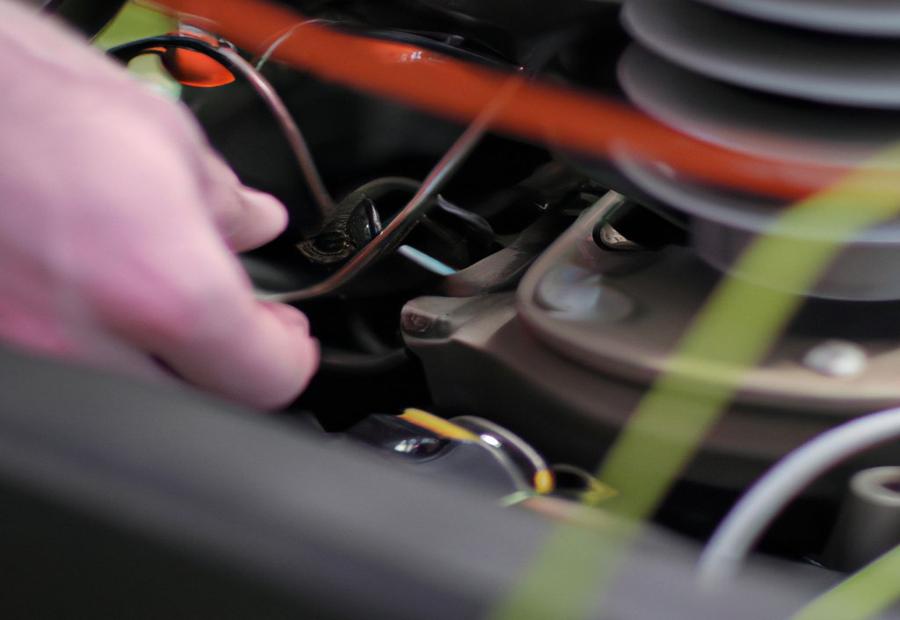
Photo Credits: Gardenerheaven.Com by Lawrence Torres
When performing maintenance on a lawn mower, it is crucial to prioritize safety. This section will explore essential safety measures and precautions during maintenance to ensure a secure and accident-free experience. From wearing protective gear to following the manufacturer’s instructions, we will discuss critical practices to help you stay safe while working on your lawn mower. Let’s dive into these precautions and equip ourselves with the knowledge to tackle maintenance tasks confidently.
Wearing protective gear
It’s essential to don protective gear when performing lawn mower maintenance. Safety glasses and goggles protect the eyes from debris. Earplugs or earmuffs combat the loud noise. Gloves guard hands against cuts, abrasions, and chemical contact. Long-sleeved clothing and pants shield skin from sharp objects and hot engine parts. Steel-toed boots provide foot protection from falling objects and sharp debris.
More than protective gear is needed. Adhere to the manufacturer’s directions. Disconnect the spark plug wire before repairs. Use proper tools, such as a socket wrench. Check the safety release mechanism cable. This ensures the mower disengages during an emergency. Inspect this regularly for accident prevention and safe operation. Following the manufacturer’s instructions is essential – it’s the difference between fixing and creating a DIY disaster.
Following the manufacturer’s instructions
- Step 1: Get to know your manual – Read the manufacturer’s manual to understand the instructions for your lawn mower model. Please pay attention to safety, maintenance, and how to operate it.
- Step 2: Pre-Start Check – Before starting, follow the manufacturer’s guidelines for pre-start checks. This could be checking oil, fuel, and air filter and spotting any damage or loose parts.
- Step 3: Starting Procedure – Each lawn mower model may have a different starting procedure. This may include priming the carburetor, engaging safety features, and using proper starting techniques.
- Step 4: Maintenance – Regular maintenance is key. Follow the manufacturer’s recommended schedule for tasks like changing oil, lubricating parts, sharpening blades, and cleaning debris.
It is important to note that following the manufacturer’s instructions helps maintain warranty coverage and prolong your lawn mower’s lifespan. Contact customer support or visit their website for further help if you are uncertain.
Remember to safely disconnect the spark plug wire before starting your maintenance routine!
Disconnecting the spark plug wire
To safely disconnect and reconnect your lawn mower’s spark plug wire, here’s a 3-step guide:
- Find the spark plug. It’s usually at one end of the engine, with a thick wire and a rubber boot.
- Firmly grasp the rubber boot. This will give you a good grip for taking it off.
- Pull the boot straight off. Don’t twist or bend, as it could damage the parts.
Push the wire firmly onto the spark plug when reconnecting until you hear a click.
Remember to take care when handling electrical components. They should only be touched when necessary and with caution.
This is essential. I once forgot to unplug the wire before removing debris from my mower’s deck. As soon as I touched an exposed metal part, I got a shock. It was a reminder of how important it is to always unplug power sources before doing any work. Safety is key.
So there you have it – fixing your lawn mower is like therapy for your sockets!
Using a socket wrench for repairs
For effective lawn mower repair tasks, using a socket wrench correctly is key.
- First, identify which component needs repair, for example, the air filter or spark plugs.
- Then, locate the bolts or screws which hold the component in place.
- Choose an appropriate socket size for the bolts or screws.
- Attach the socket to the wrench and fit it onto the bolt or screw head.
- Use firm but controlled pressure to turn the socket wrench counterclockwise to loosen the bolt or screw.
- After it is loose, remove it manually.
- If replacing a component, take it out and replace it with a new one.
- Properly align the new component and insert any bolts or screws.
- Fit the socket back onto each bolt or screw and use gentle pressure to turn it clockwise, ensuring you have firmly tightened each one.
- Remember, selecting the correct socket size is critical to prevent damage to the bolts or screws.
By following these steps and using a socket wrench properly, you can effectively address various repair tasks on your lawn mower.
Don’t forget regular maintenance to prevent issues and keep your equipment in excellent condition! Take action now to keep your lawn mower working optimally.
Checking the safety release mechanism cable
To check the safety release mechanism cable, follow these steps:
- Engage the parking brake and disconnect the spark plug wire.
- Find the cable, usually near the handle or control panel.
- Pull on the cable to see if it works, and stop the engine and blade.
- If not, adjust or replace it.
Checking the cable is essential. It helps keep you safe in an emergency. Do this as part of routine maintenance to stay safe and stress-free while mowing.
Conclusion
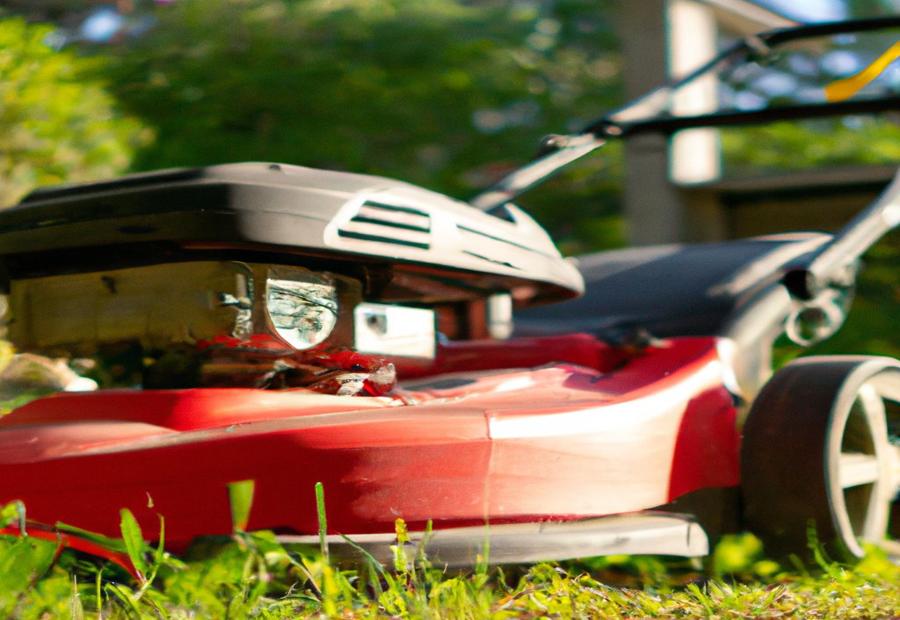
Photo Credits: Gardenerheaven.Com by Peter Hill
In conclusion, regular maintenance and preventative measures are crucial in keeping your lawn mower running smoothly. Discover the most common reasons and their corresponding easy solutions for a lawn mower that won’t start after sitting. Stay tuned for a summary of essential insights to ensure your lawn mower remains in good working condition.
Importance of regular maintenance and preventative measures
Regular maintenance and preventative measures are essential when it comes to a reliable start and optimal performance of a lawn mower. Neglecting it can cause issues such as starting problems, decreased performance, and even breakdowns.
Investing in maintenance can avoid these issues. Sitting for extended periods can lead to dirty air filters, old or contaminated gas, clogged fuel filters, worn spark plugs, carburetor issues, faulty flywheel keys, and blocked mower decks. Ignoring regular maintenance can be costly.
One of the advantages of regular maintenance is preventing starting issues after lawn mowers sit idle. Dirt and debris in the air filter can restrict airflow, making it hard to start. Cleaning or replacing the air filter regularly helps.
Maintaining the quality of fuel in the gas tank is also essential. Gasoline can become stale or contaminated, harming engine performance. Draining and refilling the tank with fresh fuel prevents starting issues.
Replacing fuel filters as needed ensures proper fuel flow to the engine. Clogged filters can stop the lawn mower from starting.
Worn spark plugs can also cause starting problems. Checking and replacing them ensures proper ignition of the fuel-air mixture.
Cleaning the carburetor removes dirt and deposits. This allows efficient fuel combustion and reliable starting.
Checking and repairing the flywheel key is essential. It is a small component that, if damaged or sheared off, can cause starting issues. This ensures smooth engine rotation and proper ignition timing.
Lastly, clearing blockages in the mower deck is essential. Blockages can impede blade rotation, resulting in poor performance or failure to start.
In summary, regular maintenance and preventative measures are vital. Addressing dirty air filters, old or contaminated gas, clogged fuel filters, worn spark plugs, carburetor issues, faulty flywheel keys, and blocked mower decks can keep lawnmowers in top condition and avoid expensive repairs or replacements. Therefore, owners should prioritize regular maintenance to extend the life of their lawnmowers.
Summary of common reasons and solutions for a lawn mower not starting after sitting
A lawn mower is necessary for a neat lawn. But, if it does not start after sitting, there are common causes. These issues can be solved by following specific solutions.
Common causes for a lawn mower not starting are: a dirty air filter, old gas, clogged fuel filter, worn spark plugs, carburetor problems, faulty flywheel key, and blocked mower deck. All of these must be addressed to get the mower running.
To fix these, do the following:
- clean or replace the air filter
- drain and refill the gas tank with new fuel
- change the fuel filter
- replace the spark plugs
- clean the carburetor
- check and repair the flywheel key
- clear any blockages in the mower deck
Take safety precautions when maintaining a lawn mower. Wear gloves and goggles. Follow the manufacturer’s instructions. Disconnect the spark plug wire before repairs. Use the right size socket wrench. Check the safety release mechanism cable.
Some Facts About Fixing a Lawn Mower That Won’t Start After Sitting
- ✅ Lawn mowers can have trouble starting after sitting for a while if not regularly maintained. (Source: Team Research)
- ✅ Some common reasons for a lawn mower not starting include running out of gas, dirty carburetor, faulty spark plug, clogged main jet, dirty oil, and clogged air filter. (Sources: Team Research, Bob Vila)
- ✅ To fix these issues, you can fill the gas tank with fresh gas, clean the carburetor and replace the air filter, replace the spark plug, clean the main jet, change the oil, and clean out the mowing deck. (Sources: Team Research, Bob Vila)
- ✅ Signs that professional help may be needed include black smoke, excessive oil or gas usage, knocking sounds, or excessive vibration. (Source: Bob Vila)
- ✅ Before spending money on repairs, try cleaning the carburetor, checking for old or contaminated gas, and inspecting the safety release mechanism cable and flywheel brake. (Sources: Eagle Power Turf & Tractor, HowTl.com)
FAQs about Fixing A Lawn Mower That Won’t Start After Sitting
1. How can I fix a lawn mower that won’t start after sitting for a while?
Common reasons for a lawn mower not starting after sitting include running out of gas, a dirty carburetor, a faulty spark plug, a clogged main jet, dirty oil, and more. To fix these issues, you can fill the gas tank with fresh gas, clean the carburetor and air filter, replace the spark plug, clean the main jet, change the oil, and more. Always use protective gear and follow safety measures when performing maintenance.
2. Can I fix a clogged air filter on my lawn mower?
Yes, you can fix a clogged air filter. Replace paper filters or clean/replace foam filters regularly. Check the air filter every 25 hours and clean or replace it as necessary. A clogged air filter can prevent ignition and cause starting issues.
3. How do I clean the carburetor on my lawn mower?
You can use carburetor cleaner to clean the carburetor on your lawn mower. Remove the air filter to access the carburetor and clean it thoroughly. If there is corrosion, it’s best to replace the carburetor. If you’re unsure how to clean the carburetor, taking your mower to a local repair shop is recommended.
4. What should I do if my lawn mower’s fuel cap is causing starting problems?
If your lawn mower quits after starting, check the vent in the fuel cap. Removing it will break the vacuum, and then reattach it. This can help solve starting issues caused by a blocked fuel cap and ensure a smooth oxygen flow to the engine.
5. When should I consider professional help for my lawn mower?
If you experience black smoke, excessive oil or gas usage, knocking sounds, or excessive vibration, it may be a sign that professional help is needed. These issues could indicate more complex problems with your lawn mower that may require specialized repairs.
6. How can I prevent starting issues with my Briggs and Stratton lawnmower?
To prevent starting issues with your Briggs and Stratton lawnmower, ensure the fuel tank is not empty and that you are not using old or contaminated petrol. Regularly check and replace the air filter if necessary and inspect and replace damaged or worn spark plugs. Regular maintenance at the end of the mowing season, such as using a gas stabilizer, changing the oil, and cleaning the lawnmower, can also help avoid starting problems.




